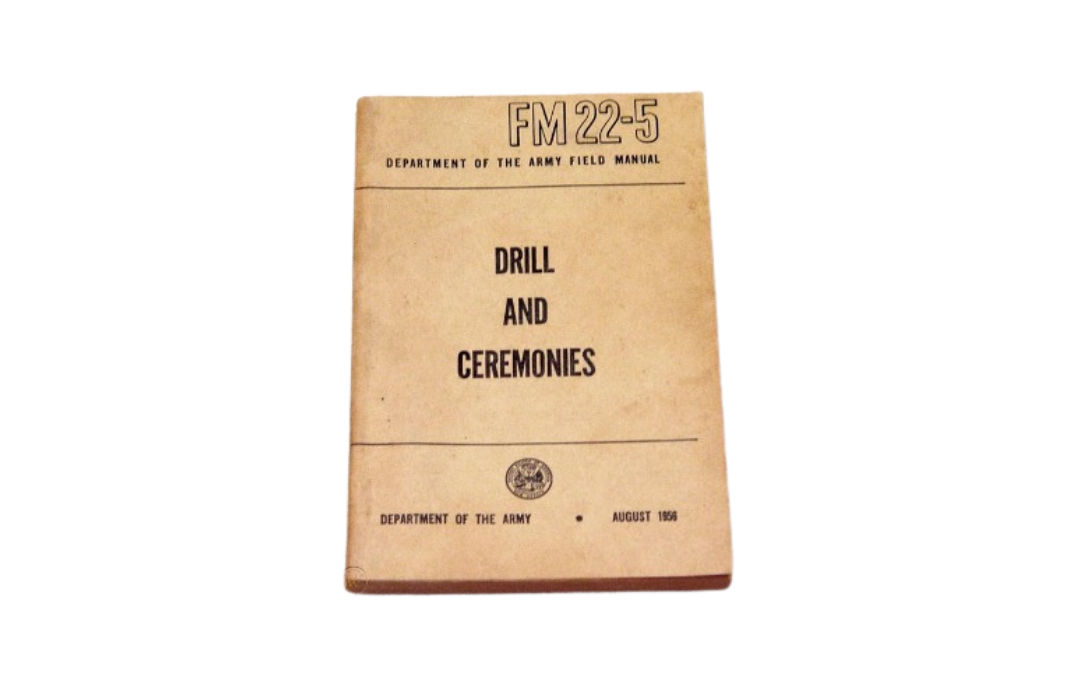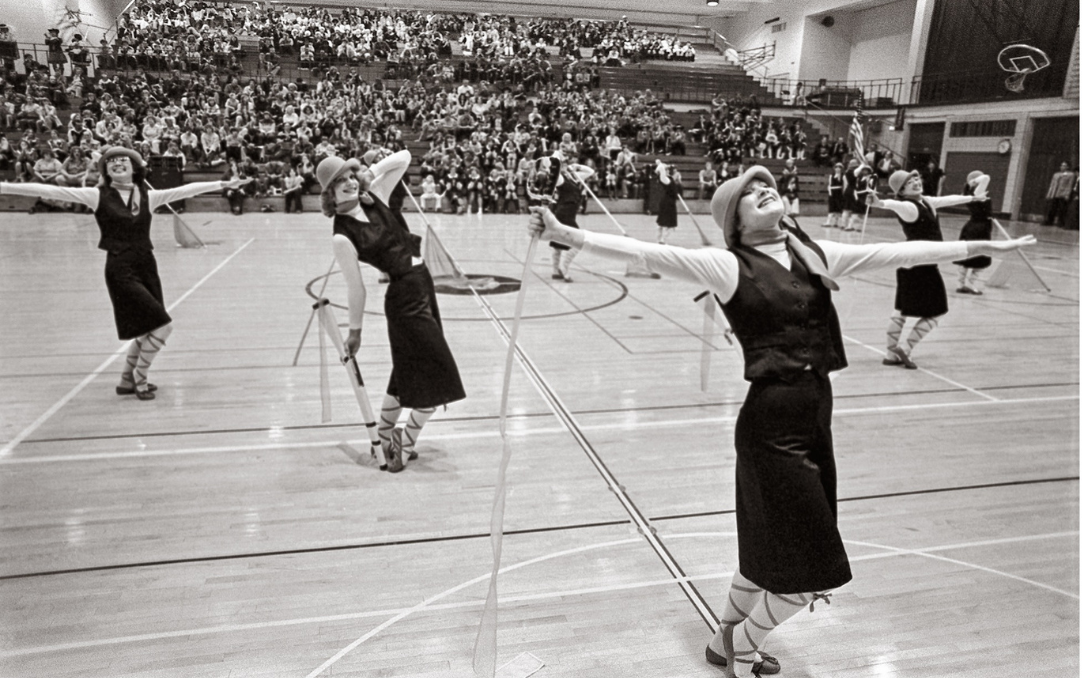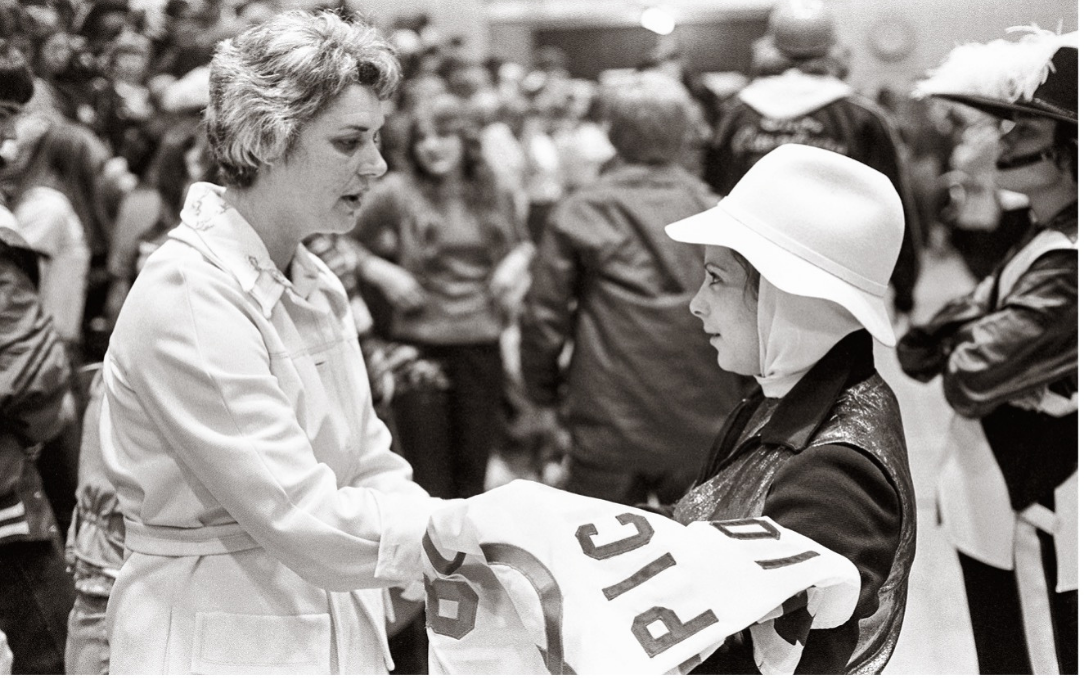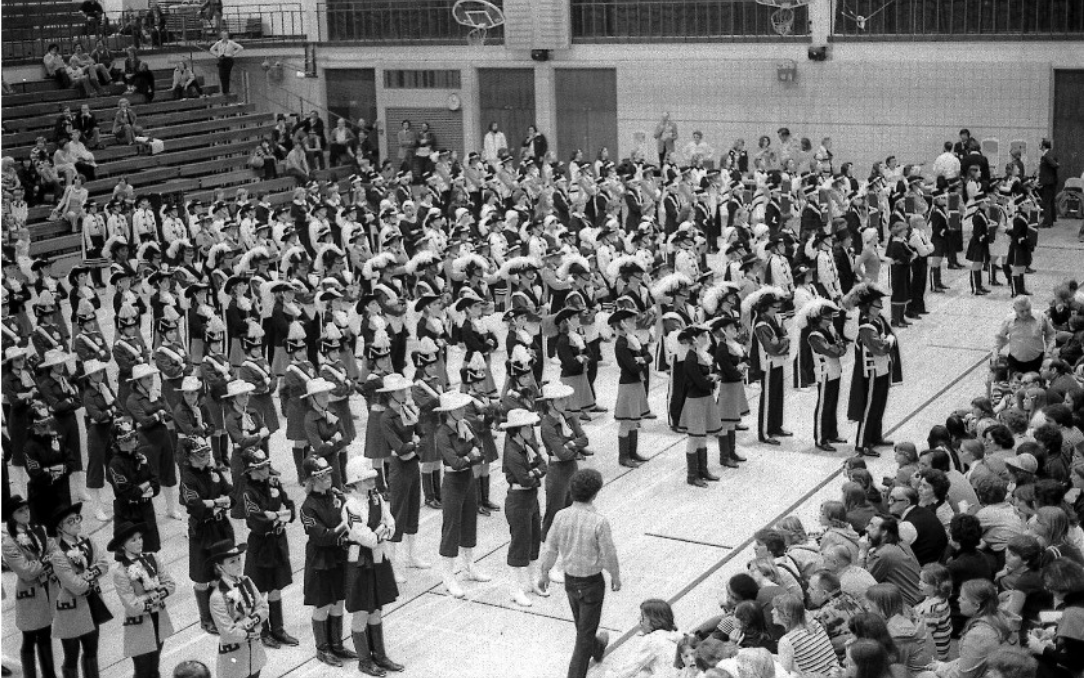By Nebai Chavez
This year marks Winter Guard International’s 45th Anniversary, and it seems fitting to recount the tale of its birth. Students of history may know all about the six visionaries who met in San Francisco, how the three regions came together in 1978, and of course, that infamous smoke machine at the first Olympics. In the grand scheme of the activity, WGI was born in the middle of the action. No doubt WGI helped shape the modern winter guard, but by the time it was established, the activity was already amid a renaissance.
pre-wgi
Throughout the 1960s and 70s, American color guards were pushing the boundaries of the activity. Around this time, concrete techniques for spinning flags were being developed. Prop rifles became lighter and thus easier to manipulate. As spinning and tossing weapons became normalized, rifle and saber lines cropped up in the activity. The innovative contributions of color guards to drum corps began to shift the activity from strict military maneuvers to more stylistic effects. Indoor “comp” guards in the East began to use recorded music rather than drums to accompany their shows. The idea of color guard programs accompanied by music began to spread to other parts of the country. Cavaliers’ color guard first used music in a portion of their program in 1969. By 1974, Northern California had changed its rules to allow a pre-recorded soundtrack in its circuit.
And while competitive color guard existed before Winter Guard International, Pre-WGI, the indoor color guard activity was very different. At that time, judges’ training, score sheets, show requirements, and even lengths of program times differed from one part of the country to the next. The activity was fragmented into isolated pockets: The Eastern guards were known for their focus on equipment technique, the Midwest stood out for their spectacular drill design, and the West brought dance and theatre to the activity. Groups didn’t travel much outside of their circuits. The only national championship event for color guards occurred at National contests of the American Legion and Veterans of Foreign Wars or with DCI Drum and Bugle Corps Championships.

Guards competed where they could: Field houses, basements, and department stores would become a competition floor for contests. This scenario was the case in August 1977; The guard championships were held in a Denver basement as a part of DCI Championships. With no air conditioning, poor lighting, and obstacles in the form of structural columns, the environment was less than ideal for a national competition event. Judges reportedly craned their necks to be able to see the units. But the show must go on; despite the underwhelming conditions of the venue, some excellent performances took shape. The Holley Hawks, in an extremely close contest, defeated the St. Anthony’s Imperials to become the national champions that year. (The Imperials received a penalty for violating the flag code by “trailing,” which meant they held a flag in front of the National Colors facing the same direction.) Guards were used to these close competitions–judged on the flag code and the Field Manual 22-5–and less than ideal facilities for competitions. Regardless, it was clear to see that the activity had outgrown its ties to the summer contests, which deviated significantly from the indoor season. Unbeknownst to many at that 1977 DCI contest, that shift was already taking place.
WGI was quietly conceived at another DCI contest in Concord, CA, almost a year earlier. Then director of the Seattle Imperials, Stanley Knaub, approached Shirlee Whitcomb with a dilemma: Western Youth International had offered to donate money, and he had no clue what to do with it. Together, they talked to Bryan Johnston, who suggested using the funds to arrange a color guard contest that would go beyond the local circuit. All in agreement, the group of future pioneers sought to include representatives from around the country at a meeting to discuss this contest. It was set for the following spring.

UNIFYING THE ACTIVITY
Over the weekend of May 14 and 15, 1977, a small group of people met at the Sheraton Palace Hotel in San Francisco to discuss the formation of an organization to govern the color guard activity from coast to coast. There were three primary goals in mind. First, to establish a standard set of competition rules. Second, to establish unity in judging techniques. And third, to provide an international championship as a climax for the winter guard season.
In attendance at this meeting were Don Angelica, Shirlee Whitcomb, Stanley Knaub, Bryan Johnston, Marie Grana–Czapinski, and Linda Chambers, along with some four representatives of Western Youth International, who served as the show sponsors. While this effort to unify the activity was a momentous undertaking, it wasn’t without its share of debate and internal controversy. The minutes of that fateful spring meeting reveal that compromises were made on everything from the minimum number of members in a guard (they settled on a minimum of 8 and a maximum of 30) to the size of the competition floor (two floor sizes were allowed: 40×60 and 50×70). But together, these six individuals succeeded in standardizing the various regional rules for adjudication and agreed that any future national championship should be independent of drum corps and marching band events.
Since most guards competed locally in the months following marching band season in the fall but before drum corps season in the spring and summer, Stanley proposed scheduling the proposed national championship in that time frame. Don Angelica suggested renaming it “winter guard” to reflect this change. Thus, they adopted the name for the governing body we all know: Winter Guard International.
A follow-up meeting at the 1977 DCI Rules Congress included representatives from thirteen color guard circuits and adjudicator associations. At this meeting, WGI adopted a draft rulebook and adjudication system and a formalized organizational structure. Then director of the Midwest Color Guard Circuit, Lynn Lindstrom, was elected the first Executive Director of WGI. Four primary guard circuits each donated $250 to provide the initial $1,000 needed to operate that debut season, including over a dozen regional championships and a two-day national championship at the end of the season.

WGI: YEAR ONE
With funding secured, WGI’s first season took place from 1977 to 1978. To uphold equal representation of the East, West, and Midwest, three separate judges shared the responsibilities of the Chief Judge position the first year. Member units all competed in the only class that existed: Open Class. With the exception of The Cavaliers, The Kilties, and State Street Review, most guards were made up entirely of girls. The first WGI Regional schedule featured an ambitious 14 regional contests held across the country and a culminating championship event known as the WGI Olympics. The first WGI Olympics was in a crowded Chicago-area high school gym, which, compared to today’s standards, would seem more like a local show than the grand arena we’re used to seeing WGI Championships.
Still, WGI made history on April 14 and 15, 1978. Twenty-nine units converged to the Chicago area for the first annual WGI Olympics preliminary contest at Crown High School. The top 15 groups competed in finals, held the following day at Conant HS in Hoffman Estates, Illinois. With talent from around the country all coming together, some great performances took shape.
Led by the DCI and WGI Hall of Fame legend George Zingali, Quasar’s design, repertoire, and showmanship propelled them to the first-ever WGI Championship title. In a close second (by a single point), was The Phantom Regiment (IL) who featured a dramatic finish. Drum Corps News recounts: “The music of ‘Star Wars’ began and up from the middle of the crowd emerged Lord Darth Vader! Women screamed in fear, and then a standing ovation followed. Instructor John Brazale had brought out his secret weapon, that little extra touch to finish off the almost complete theme show.” The innovative Seattle Imperials snatched WGI’s inaugural bronze medal in 1978.
All in all, in its first year, WGI accomplished all it set out to do. It provided a season with a national event where, for the first time, everyone competed with the same rules and judging system they had agreed to by consensus. Now, that’s not to say the color guard activity suddenly homogenized in 1978. It would take time for skill sets, styles, and values to meld between what had previously been separate bubbles in the activity. For many years guards from different regions of the country saw each other as “exotic creatures who reflected their own regions,” as Richard Berthelsen put it. Each region still had its signature flair. West coast groups were experimenting with dance and showmanship. Mid-west groups were unparalleled in their marching execution, probably due to their close affiliation with drum corps. And the East coast groups had a precise approach to their equipment–carriage as they referred to it.

In the early years of WGI some units were still required to perform “requirements” in their local circuit. Each unit had to enter the competitive area over the starting line, exit over the finish line, and execute certain precise maneuvers. These maneuvers included Pass in Review, where units marched past a specified point and saluted while marching; Presentation of the Colors, where the colors advanced and halted, and the guard saluted and the flag bearers dipped their flags; and Post and Retrieve, where weapons presented their arms and flag bearers rendered a hand salute, and colors were retrieved. Programs would be designed around these requirements and form sections that didn’t necessarily relate to one another but were required.
At any given regional in the early years of WGI you would see a variety of shows; there was a heavy influence from the Drum Corps paradigm of visual musicianship as well as shows using classical symphonic standards, Broadway shows and jazz music in their programs. Disco and Dance music began finding its way onto the floor, too. It could be argued that Disco and Dance music, which had instant appeal to the audience, helped pave the way for less regimental shows.
Either way, the late ’70s and early ’80s saw a lot of reinventions. WGI units got together to change many of the rules that were rooted in militarism. The era of pageantry and innovation in design and choreography was in full effect. Many groups challenged norms and pushed boundaries. The Seattle Imperials famously received gasps when they stepped onto the floor, not in marching boots but ballet shoes. As we celebrate WGI’s 45th Anniversary, it’s essential to acknowledge that the world of color guard today owes itself to the bold choices of that time.
About the Author:
Nebai Chavez is a colorguard educator, graphic designer, filmmaker, and freelance writer based out of San Diego, CA. Their marching credits include Vox Artium Winterguard, The Santa Clara Vanguard Cadets, and The Blue Stars. Nebai is pursuing their dream of providing accessible resources for the marching arts and is currently working on a documentary film series on the history and evolution of winterguard.

